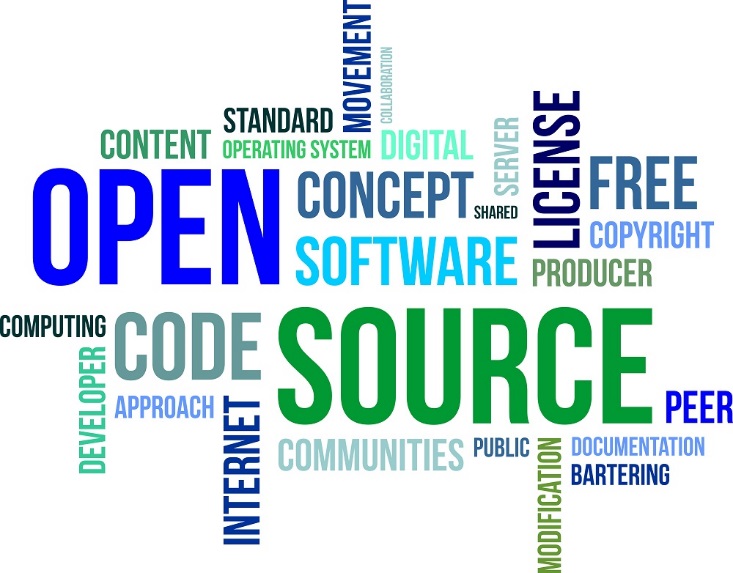The days of the big mechanical cash register are long gone; even platen scanners are no longer considered a necessity for retail services, with big box retail chains like OfficeMax stores eschewing the glass and laser counter for a simple hand scanner.  Many retailers already use Ubuntu or Linux operation systems for their point of sale (POS) systems due to the locked down security they offer, but for the most part this has been limited to large chain retailers with money to spend on a dozen POS stations at a time.
Many retailers already use Ubuntu or Linux operation systems for their point of sale (POS) systems due to the locked down security they offer, but for the most part this has been limited to large chain retailers with money to spend on a dozen POS stations at a time.
However, with the release of Ubuntu Touch 14.04, the winds of change may just be blowing in. As stated by developers—and reiterated in Ars Technica's review—the 14.04 is a "mostly stable" build of the Linux based mobile OS. It's not perfect, but the fact that it offers unrivaled security with the mobility and touch functionality of a tablet means this could be a contender for POS systems in small businesses everywhere.
 Many retailers already use Ubuntu or Linux operation systems for their point of sale (POS) systems due to the locked down security they offer, but for the most part this has been limited to large chain retailers with money to spend on a dozen POS stations at a time.
Many retailers already use Ubuntu or Linux operation systems for their point of sale (POS) systems due to the locked down security they offer, but for the most part this has been limited to large chain retailers with money to spend on a dozen POS stations at a time.However, with the release of Ubuntu Touch 14.04, the winds of change may just be blowing in. As stated by developers—and reiterated in Ars Technica's review—the 14.04 is a "mostly stable" build of the Linux based mobile OS. It's not perfect, but the fact that it offers unrivaled security with the mobility and touch functionality of a tablet means this could be a contender for POS systems in small businesses everywhere.
Easy Checkout
According to the specs offered on the official site, Ubuntu Touch works on displays as small as 6.5 inches and as large as 20 inches, meaning that while buying a brand new tablet for just this purpose sounds like a great idea, most small business owners can probably get away with putting it on that Nexus 7 half the entrepreneurs of the world picked up last year to help manage their business better.
There are a plethora of apps, both free and paid, that can turn an Ubuntu tablet into a POS station, but with a five star rating on SourceForge and an update within the last 90 days, POSper is definitely the winner. This is a simple, easy to use touch-based POS app designed for use on a Linux OS—the touch-based functionality makes it seem that this one was designed specifically for Ubuntu Touch, but that's not even the best feature. POSper was designed specifically for small businesses, supporting an impressive range of hardware and databases to allow everyone who uses it to get the most out of every feature.
There are a plethora of apps, both free and paid, that can turn an Ubuntu tablet into a POS station, but with a five star rating on SourceForge and an update within the last 90 days, POSper is definitely the winner. This is a simple, easy to use touch-based POS app designed for use on a Linux OS—the touch-based functionality makes it seem that this one was designed specifically for Ubuntu Touch, but that's not even the best feature. POSper was designed specifically for small businesses, supporting an impressive range of hardware and databases to allow everyone who uses it to get the most out of every feature.
In spite of being free, POSper offers a number of features commonly only found in paid POS applications:
- Ability to use multiple currencies (with programmable exchange rates)
- Custom payment methods including "free" and "invoice"
- Warning message when no payment type is selected (often even big retail POS systems simply do nothing in the case of this error, so this is an excellent feature for new users)
- System warnings in plain English for new users
- Printer templates with scale and margin features
With these simple must-have features available on a secure, stable and free system, what is it that's keeping Ubuntu Touch from becoming the clear choice for small businesses everywhere? As usual, it's a problem with plastic. At the moment the biggest hurdle to jump toward making a complete POS system for small businesses that works with a Linux operating system is actually the credit card reader. While there are plenty of readers that are compatible with Ubuntu and Linux, considering it's fairly popular with big retailers, they're a little pricey when it comes to individual sales.
However, retailers can rest assured that, as more small businesses get familiar with what a Linux OS can offer them in terms of security and ease of use, there's little doubt that Square and PayPal Here will offer compatibility before long.
However, retailers can rest assured that, as more small businesses get familiar with what a Linux OS can offer them in terms of security and ease of use, there's little doubt that Square and PayPal Here will offer compatibility before long.
A Full Retail Solution?
When it comes to small business retail, there are a lot of moving parts. While the POS terminal itself is extremely important to the daily operation of mom and pop shops everywhere, that's not the end of it. On top of needing a POS system and all related hardware, small businesses also need to make sure the checkout process is easy and inventory can easily be tracked.
Thankfully, those requirements have a single solution, and it's one that Linux can provide with ease: UPCs and other barcodes. Chances are you've already heard about the ZINT Barcode Generator, which offers easy creation of over 150 different barcode symbologies from UPCs to QR codes; this is one program that every small business that works with a barcode scanner could use, and it's designed especially for Linux.
ZINT Barcode Generator can also create USPS codes, making business easier for online retailers as well by offering simple shipping solutions. No more wasting hours in the post office every time a big order comes in! All you need is a Linux compatible barcode printer, like the ones offered by small business support company Shopify, and you're ready to get started.
Thankfully, those requirements have a single solution, and it's one that Linux can provide with ease: UPCs and other barcodes. Chances are you've already heard about the ZINT Barcode Generator, which offers easy creation of over 150 different barcode symbologies from UPCs to QR codes; this is one program that every small business that works with a barcode scanner could use, and it's designed especially for Linux.
ZINT Barcode Generator can also create USPS codes, making business easier for online retailers as well by offering simple shipping solutions. No more wasting hours in the post office every time a big order comes in! All you need is a Linux compatible barcode printer, like the ones offered by small business support company Shopify, and you're ready to get started.
Trust In the Future
Whether Ubuntu Touch ever catches on in small business POS systems remains to be seen. Considering the unrivaled security and ease of use, as the operating system becomes more streamlined in updates past the 14.04 you can expect to see it used more often in retail business everywhere. It may just change how small retailers do business, both from a cost perspective and when it comes to the go-to equipment.



